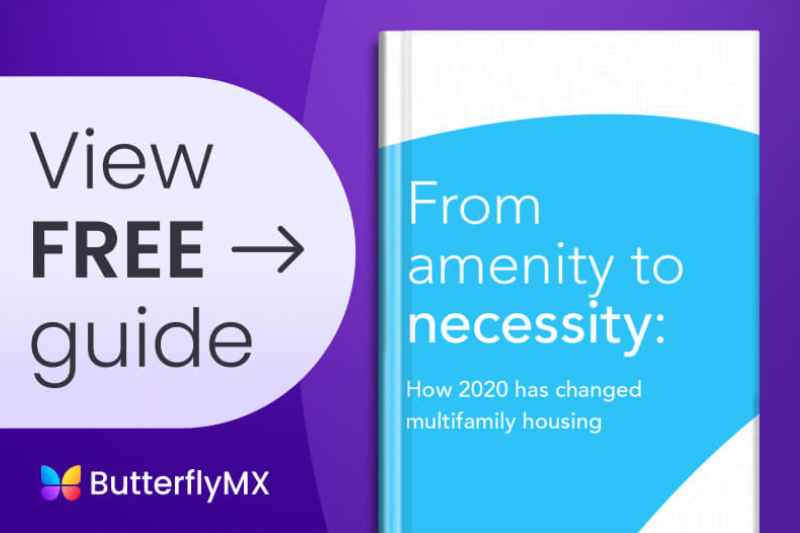Key takeaways
- Employee turnover is particularly high in the multifamily industry because property managers, leasing agents, and maintenance professionals often feel burnt out, underpaid, and undervalued.
- Making efforts to reduce employee turnover will benefit your bottom line by helping to maximize NOI, preserving useful building insights, and maintaining a positive reputation.
- You can help reduce the multifamily employee turnover rate by making employees feel appreciated, promoting from within, investing in training, reducing employee stress, and requesting feedback.

The multifamily industry has proven resilient, but one problem that still plagues it is employee turnover. Compared to other industries, property management sees much higher turnover rates. The annual employee turnover rate in multifamily is a whopping 33%, far exceeding the national average of about 22%.
But why is the multifamily employee turnover rate so high? And how can we overcome it? Read on for tips on how to better retain staff, from property managers to leasing agents to maintenance professionals.
Read this post to learn:
- Multifamily turnover vs. national average turnover
- Why is the multifamily employee turnover rate so high?
- Why you should reduce the multifamily employee turnover rate
- 5 ways to reduce high multifamily employee turnover
Multifamily turnover vs. national average turnover
Turnover is expected in any industry, but some are more susceptible to it than others. Unfortunately, the multifamily industry experiences high turnover in critical roles such as property management, maintenance, leasing, and more.
What is a normal employee turnover rate?
A normal employee turnover rate is about 12-15% annually. And though it changes year by year, the national average turnover rate tends to trend around 22%.
Generally, property management companies with 10% or lower turnover are said to have good staff retention, while those with 25% or higher turnover have somewhat subpar retention.
What is the turnover rate for property managers?
Data from the National Multi-Housing Council (NMHC) and the National Apartment Association (NAA) show property manager turnover rates trending between 33% to 36%. The turnover rate has generally increased year over year for the last decade or so for property managers at both short-term and long-term rental properties.
Watch how ButterflyMX improves the resident experience:
Why is the multifamily employee turnover rate so high?
The multifamily employee turnover rate is particularly high for a few key reasons: stress and property manager burnout, lack of comprehensive benefits, an aging workforce, and low satisfaction with the company or role.
According to NAA, the multifamily employee turnover rate steadily increased virtually every year between 2010 and 2019. This is a concerning trend that the industry must address collectively.
In April 2021, four million Americans quit their jobs. And resignation only grew — a record 4.4 million Americans quit in September 2021.
According to research by career site Zety, the top three reasons why Americans across industries have been quitting are:
- Low salary
- Limited career opportunities
- Not being valued by management
These factors certainly apply to multifamily professionals. But property managers and leasing agents experience other unique issues that drive them away.
Top factors causing high employee turnover in multifamily:
- Stress and burnout: Burnout is perhaps the top contributor to employee turnover. By nature, property managers and those in similar roles have high-stress jobs. But unmanageable workloads leave them feeling frazzled and frustrated.
- Lack of health care and other benefits: Many multifamily professionals report feeling that their employers’ benefits packages leave much to be desired.
- Aging workforce: As fewer college graduates enter the field, the multifamily workforce is aging. Many top property managers, maintenance professionals, and leasing agents are reaching retirement age — but with no one to replace them.
- Work satisfaction: Many property management firms provide little to no room for growth or career development. Additionally, many workers feel undervalued in their roles.

Why you should reduce the multifamily employee turnover rate
We’ve covered why the multifamily employee turnover rate is high. But why does it matter? And how does high employee turnover affect you and your building?
When property managers shop their resumes around and ultimately resign, they’re actually costing you a lot of time, money, and resources. So, it’s in your best interest to retain employees as long as possible.
Here’s how reducing multifamily employee turnover benefits you:
- Maximize NOI: Property staff is integral to your bottom line. After all, they’re the ones on the ground making efforts to improve the resident experience and sign new leases, which ultimately helps maximize real estate NOI. If you have to focus more effort on hiring and training new employees, that’s time you’re not spending on delighting residents, communicating with prospects, and growing the business.
- Preserve building-specific knowledge: Onsite management and maintenance staff know your building better than anyone. When seasoned employees leave, they also take their experiences and insights about the building with them. This leaves newer employees without effective leaders and mentors.
- Maintain a positive reputation: High staff turnover is a bad look for residents and prospects. Residents will notice the turnover and wonder what’s wrong with the management company. Additionally, high turnover may leave you short-staffed, which means unanswered prospect inquiries, slow response times, and lackluster property maintenance.
5 ways to reduce high multifamily employee turnover
You know why it’s worth reducing turnover, but how do you better retain multifamily employees? There are a variety of things you can do to retain employees longer.
Here are the top five ways to reduce multifamily employee turnover:
- Make employees feel appreciated
- Promote from within and give them room to grow
- Invest in training and professional development
- Reduce stress and prevent burnout
- Request and respond to feedback
1. Make employees feel appreciated
Property management can feel like a thankless job. So make sure you show your employees you care. You can make employees feel appreciated in various ways, such as offering bonuses, revamping your compensation structure, hosting employee appreciation events, and granting stipends for self-care. You can try different tactics to see what resonates most with your staff and makes sense with your multifamily building’s budget.
It’s also important to give employees credit for their successes. By highlighting your employees’ positive impact on the property and the company, you’re making them feel valuable. Everyone wants to feel like they’re contributing something, so remember to give credit where credit is due
2. Promote from within and give them room to grow
No one wants to feel stuck in a dead-end job. So if your employees don’t see opportunities for upward mobility, they won’t stick around. And unfortunately, property management can often be a one-track role.
Ask yourself: Is there a clear path for career progression at your firm? Are employees challenged and given additional responsibilities when they’ve proven themselves?
If not, take the time to carefully consider your company’s structure and the structure of teams within it. Develop roles that naturally progress with greater responsibility.
Additionally, consider how you impact employees when you hire externally rather than internally. Whenever possible, show employees you appreciate and trust them by promoting from within.

3. Invest in training and professional development
Experienced real estate and industry newcomers alike agree that they’d be more likely to stick around if they received better property management training and professional development.
So, start things off on the right foot with new employees by investing in an effective training program. Make sure every newcomer has the tools, resources, and mentorship needed to succeed. And don’t forget that it can take upwards of several months for an employee to be truly trained-up and performing at their best.
Additionally, invest in ongoing education and career development for current employees. This will help them level up and enhance their skills while connecting with the industry and the company on a deeper level.
Some ideas to implement this include:
- Offer stipends for third-party courses
- Launch an internal professional development team
- Set aside time every month to host training sessions led by various senior employees in the company
4. Reduce stress and prevent burnout
Perhaps the leading cause of multifamily employee turnover is stress and burnout. Property and maintenance professionals have busy schedules, their days filled with a seemingly endless number of tasks. While some of this is an inevitable reality of the role, you can help make their jobs less stressful.
Try these solutions to reduce burnout:
- Hire more employees to reduce each person’s workload
- Offer half-day Fridays, additional paid holidays, or self-care days
- Offer classes for employees to learn time management and stress-coping skills
- Encourage employees to set boundaries between their personal and professional lives — like no emails on weekends
- Invest in property technology that automates tasks and saves time for staff
5. Request and respond to feedback
If you don’t know why your employees turnover quickly, you might need to be more in tune with their experiences. The best way to understand how they’re feeling is to request feedback often. Whether you request one-on-one calls with employees or send out company-wide surveys, there are plenty of ways to solicit feedback.
But don’t stop there. You must also respond to employees’ feedback and implement thoughtful changes that actually address their needs and requests.
And remember: Don’t take employees’ feedback personally. Use it as an opportunity to self-reflect, improve as a leader, and enhance the employee experience.








